
In today’s world of rising prices, finding cost-efficient solutions to everyday problems is crucial. We’re all looking for ways to save money on our energy bills at home and work. Whether you’re looking to invest in technology that will save you money and energy in the long run or just trying to make a difference in your everyday life with small energy-saving acts, this comprehensive list will provide you with tips to save money for your home and business.
Home Energy and Money Saving Tips
Your home sees a lot of activity, much of it coming from devices and appliances you use every day. From charging your phones and computers to running the dishwasher after family dinners, your energy bill reflects the energy you use. If you’re trying to figure out how to save energy at home and cut down on your electricity bill, these tips will help you get started.

1. Choose Energy-Saving Window Film for Your Home
Windows can affect the aesthetic of your home, but did you know they can impact the cost of your home, too? Windows let in natural light, create glares, wash out furniture, let in ultraviolet (UV) rays and even increase your energy bill. By adding energy-efficient window film to your home’s windows, you can decrease your risk of UV exposure, extend the longevity of your furniture and, most importantly, save money on energy costs.
Residential heat control window films can cut down heat in the summer and reflect it back into your home in the winter. This light and heat regulation helps you enjoy reduced energy bills and a more comfortable home during the summer and winter months. Every homeowner’s style is different, but there are a diverse array of window tints available that can reflect your style while also reflecting heat so you can conserve energy.
See some of the ways solar control window films can help you save energy:
- Reflective: Reflective Silver and Optivision® Reflective tints are designed to keep your home more comfortable by providing interior and exterior reflectivity. Reflective tints can minimize glare and offer privacy without obstructing your views, and they block up to 80% of heat from the sun.
- UV protection: Protect yourself and your family from the harmful effects of UV rays with UV Gard tint. This special-purpose film filters out 99% of UV rays while still allowing the maximum amount of light into your home.
- Stylish and functional: Premium residential window films allow you to save energy at home without sacrificing your personal style. Find energy-efficient window films that can reduce heat, minimize glare or create a soft, natural appearance.
- U.S. Federal Tax Credits: Up to $600 in tax credits is available to U.S. homeowners, a benefit that was recently extended through 2032.
2. Switch to a Tankless Water Heater
According to Energy Saver, tankless water heaters can be 24%-34% more energy-efficient than storage tank heaters. Tankless water heaters provide hot water only when needed and heat water instantaneously, eliminating standby heat and energy losses associated with traditional storage water heaters. While tankless water heaters have a higher initial cost than storage water heaters, they are more cost-efficient in the long run, have lower operating costs and tend to last longer.
3. Use Smart Thermostats
Smart thermostats are incredibly intuitive, regulating your home’s temperature on their own. Software algorithms in smart thermostats observe your family’s comings and goings and use that information to adjust your heat and air conditioning (AC) automatically. By recognizing when heating and cooling aren’t necessary, like when you’re not home, your smart thermostat can save electricity, bringing down heating and cooling costs.
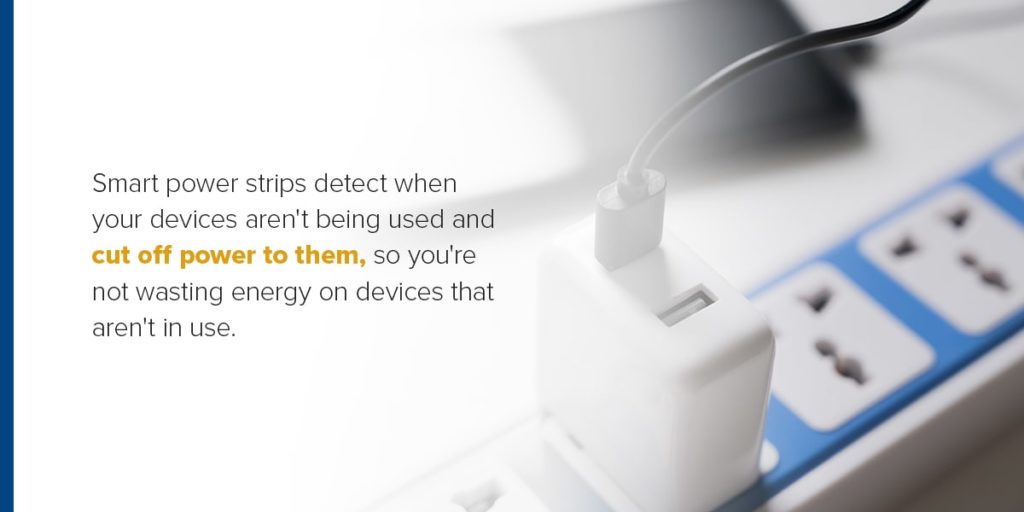
4. Utilize Smart Power Strips
Your devices — like laptops, TVs and cable boxes — consume energy even when turned off or in sleep mode. Like smart thermostats, smart power strips can sense when energy isn’t needed to power something. Smart power strips detect when your devices aren’t being used and cut off power to them, so you’re not wasting energy on devices that aren’t in use.
5. Use Ceiling Fans
While this home energy-saving tip may seem strange, hear us out. Ceiling fans use significantly less energy to run compared to an AC unit, but simply buying a ceiling fan isn’t going to save your energy costs. Purchasing a ceiling fan that’s the appropriate size for the room you’re using it in will ensure it performs at maximum capacity. Large ceiling fans require less energy to create a more substantial amount of airflow, making them better suited for open spaces, whereas a smaller ceiling fan will exert more energy to complete the same task.
6. Consider Adding Solar Panels
Solar panels provide your home with a natural energy source and require little maintenance or upkeep. Like tankless water heaters, solar panels are costly up front but can bring a major return on investment in no time. Especially if you live in an area with high energy rates, solar panels could be a fantastic energy-saving investment for your home.
7. Conduct a Home Energy Audit
Save money and energy by having a home energy audit on your house. Home energy audits can give you a detailed report of where energy is being lost in your home, how efficiently or inefficiently systems and appliances are operating and how you can better save money and energy. These audits are usually done through your local utility company and are offered in two forms:
- Basic energy analyses are the perfect budget-friendly option for identifying energy inefficiencies within your home. During a basic energy audit, a certified technician will inspect window and door air leaks, appliances’ age and condition, electrical device usage and much more.
- Comprehensive energy audits are more expensive but include a basic energy analysis along with other tests. Comprehensive energy audits include testing for duct leakage, wood moisture, mold and asbestos checks and thermal imaging scans. Their detailed results can help you more accurately pinpoint areas of your home where energy is being lost and where efficiency can be optimized.
8. Make Little Adjustments to Everyday Life
If you’re not looking to invest money into gadgets that’ll cut energy costs, there are still some ways to save energy at home without breaking the bank. These home energy-saving tips can be incorporated into your daily life and put you on track toward a lower energy bill:
- Turn off your lights: When you were younger, you may have rolled your eyes when someone scolded you for leaving the lights on. As annoying as it might have been back then, turning off the lights when they’re not needed can save your home a significant amount of energy. You can purchase timers and motion detectors to ensure you’re using your lights efficiently.
- Limit oven and stove use: Save money in your kitchen by cutting down on your oven and stove use. Limit pre-heating times to avoid using extra energy and repeatedly opening it to check on your food. Your oven’s temperature can drop approximately 25 degrees each time you open the door, so it’ll need to use more energy to get the temperature back up to normal.
- Hang clothes to dry: Your dryer uses energy to produce heat to dry your laundry. You can run your dryer less often by hanging your close out to dry, especially during the spring and summer. If you can’t let your laundry air dry, make sure to always keep your dryer’s lint screen clean so it can run more efficiently.
- Hand wash dishes: When possible, hand wash your dishes to save money on the energy needed to heat water for your dishwasher to run. If you don’t have the time to hand wash them, only run your dishwasher when you have a full load to minimize the number of times you run it. Consider letting your dishes air dry by cracking open the door rather than leaving it on for the drying cycle.
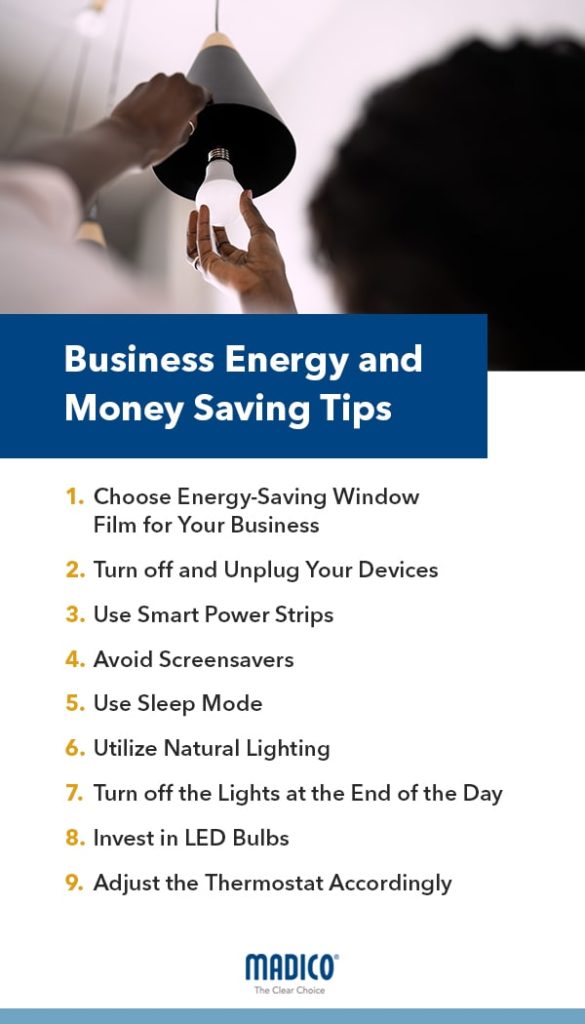
Business Energy and Money Saving Tips
Businesses are incredibly reliant on technology to keep things running smoothly. Your computers, monitors, copiers, modems and in-office lighting all require electricity, so it’s no surprise that businesses have hefty energy bills. As a business owner, there are quite a few ways to conserve energy and save money.
1. Choose Energy-Saving Window Film for Your Business
Your office building’s windows offer your employees a portal to the outside world while working indoors for most of the day. Especially now, floor-to-ceiling windows give your office building a sleek, modern look that makes the interior workspace feel open and inviting. While those beautiful floor-to-ceiling views offer your employees a brief respite during the busy workday, they’re also letting in harmful UV rays and natural sunlight that can create annoying glares on computer screens, disrupting workflow.
By installing commercial UV-blocking window film on your building’s windows, you can regulate your office’s temperature and avoid those pesky thermostat wars. Energy-efficient window films can reduce heat accumulation from natural light and reflect heat inside the office during colder months. You’ll slow fading for your interior furniture and merchandise and save money from potential replacement costs.
Commercial UV-blocking window films offer several benefits to your business, like:
- Privacy: Optivision® Reflective and Reflective Silver films provide external reflection to maintain privacy and lower energy costs while still allowing your team a natural view of the outside.
- Enhanced exterior appearance: Improve the look of your business’ exterior with a professional installation of exterior architectural window films that blend style with functionality. These window tints slow fading and reduce glare while giving your business’ exterior a sleek, uniform look.
- Temperature control: Sunscape® Softlite window films reduce heat within your building to create a comfortable indoor work environment while cutting down on heat and air conditioner costs. These window films offer soft tones that encourage natural lighting in your building.
2. Turn off and Unplug Your Devices
Turning off your devices and unplugging them when they’re not in use is a great way to avoid your devices falling victim to excess energy use. Have employees turn off and unplug computers, monitors and other technologies before they leave the office for the day.
3. Use Smart Power Strips
Smart power strips are an excellent way to conserve your business’s energy usage. Especially in an office setting, smart power strips are a great way to ensure your devices aren’t using unnecessary energy while you’re not at your desk during long lunches or weekends.
4. Avoid Screensavers
While they may look nice when they pop up on your screen, screensavers do not conserve energy. Even when your desktop’s display goes blank, it’s still using energy. When you use a screensaver rather than sleep mode, you’re actually decreasing your computer’s energy efficiency.
5. Use Sleep Mode
Using sleep mode when your computer is inactive is an excellent alternative to screensavers, as it reduces your computer’s electricity usage. Encourage your employees to put their computers in sleep mode if they’re stepping away from their desks for periods of time rather than letting them get to a screensaver.
6. Utilize Natural Lighting
Use daylight to your advantage — turn off the lights and let natural light illuminate your office space when the sun is shining. With the right window film, you can confidently turn off the lights to save energy without worrying about the distracting glare from sunlight streaming through the windows and keep productivity going strong.
7. Turn off the Lights at the End of the Day
Just like at home, turn off the lights when you’re leaving. If you know there will not be anyone in the office until the next work day, turn off the lights to avoid wasting valuable energy. If you have night cleaning crews that come in regularly after hours, consider investing in motion sensor lights that will turn off automatically when no activity is detected.
8. Invest in LED Bulbs
LED lighting can save your business energy in more ways than one. LED lights are popular in commercial and industrial industries because of their high efficiency rating. They use almost 75% less energy than regular incandescent lighting and can last up to 25 times longer. LEDs also produce less heat compared to incandescent and CFL lights, which release up to 90% of their energy as heat.
9. Adjust the Thermostat Accordingly
Turning down your office’s thermostat a few degrees before you leave for the weekend can make a huge difference in your monthly energy bill. If you’re not working during the weekend, your office’s heating and air shouldn’t be either.

Find a Madico® Dealer Today
Madico’s trained professionals are ready to help you choose the right energy-saving window film for your home or business. Our network of Madico dealers can help you protect the inside of your home or business from the sun’s harmful UV rays and slow the fade of furniture and merchandise. If you’re ready to experience the difference Madico can make in your home or business, find a dealer near you today to discuss window film options and schedule an installation.


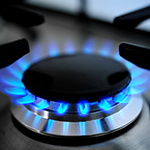
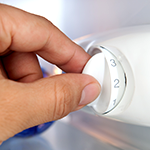
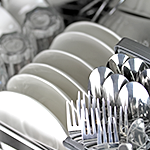
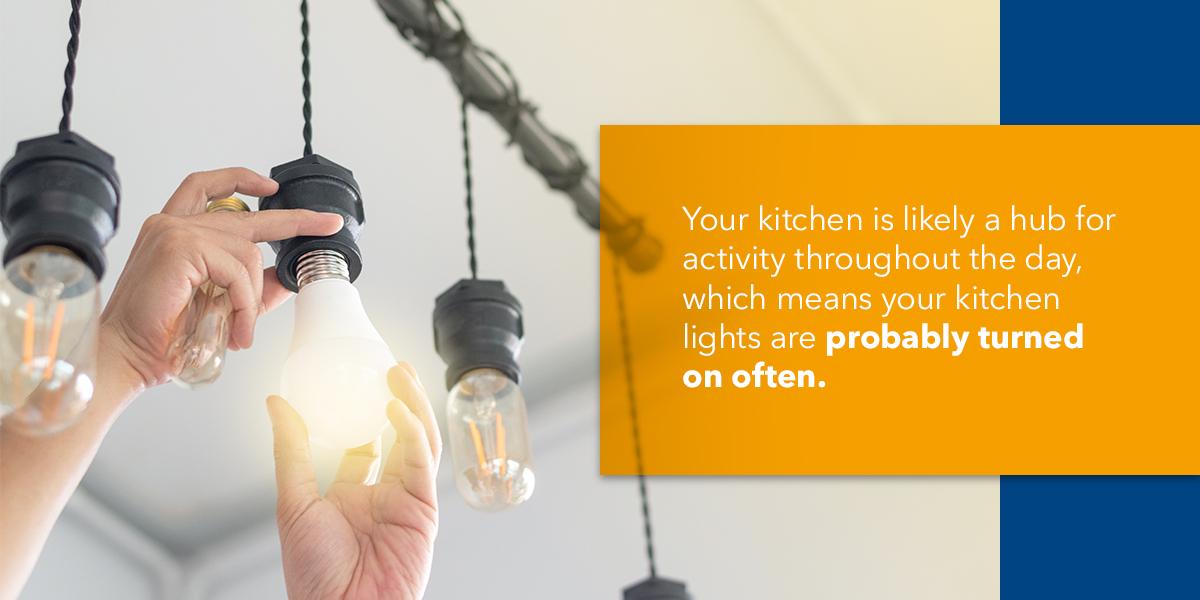
 This is not necessarily true. While, yes, replacing windows with glass that is thick and tinted could eventually save energy and cut down bills, the amount you’d be spending on those windows definitely will not out weigh the benefits.
This is not necessarily true. While, yes, replacing windows with glass that is thick and tinted could eventually save energy and cut down bills, the amount you’d be spending on those windows definitely will not out weigh the benefits. Actually, using a
Actually, using a  Contrary to popular belief, a ceiling fan doesn’t help your air conditioning unit to cool a room more quickly, or allow it to work less. A fan makes us THINK we are cooler because the air circulating touches our skin and makes us believe the room is cool. However, keeping a fan running doesn’t actually cool a room, just the area around it. In fact, keeping it running will cost more than allowing your air conditioning to slowly cool a room on its own.
Contrary to popular belief, a ceiling fan doesn’t help your air conditioning unit to cool a room more quickly, or allow it to work less. A fan makes us THINK we are cooler because the air circulating touches our skin and makes us believe the room is cool. However, keeping a fan running doesn’t actually cool a room, just the area around it. In fact, keeping it running will cost more than allowing your air conditioning to slowly cool a room on its own. Well, not exactly. Actually, allowing the hot water to run as you clean the dishes uses more water and forces your water heater to work more quickly than running the dishwasher.
Well, not exactly. Actually, allowing the hot water to run as you clean the dishes uses more water and forces your water heater to work more quickly than running the dishwasher.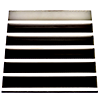 Myth 1: Close vents and registers in unused rooms to save energy.
Myth 1: Close vents and registers in unused rooms to save energy.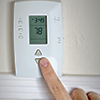 Myth 2: Crank the thermostat higher to heat or cool a home faster.
Myth 2: Crank the thermostat higher to heat or cool a home faster.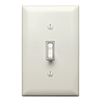 Myth 3: Turning on and off a light generates more energy than leaving it on.
Myth 3: Turning on and off a light generates more energy than leaving it on. Myth 4: Your computer’s screen saver is also an energy saver.
Myth 4: Your computer’s screen saver is also an energy saver.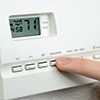 Myth 5: Keep your thermostat at one constant temperature.
Myth 5: Keep your thermostat at one constant temperature. If a certain room in your home feels hotter or colder than other areas, you may have hidden air leaks. Find them with a thermal leak detector, which is a device that uses an infrared laser to measure surfaces for dips and peaks from a reference temperature. To locate where you are losing energy specifically, shine the device around doors, windows, and footings. Most devices alert you to differences in temperature by changing from neutral green to red (hot) or blue (cold) so that you can pinpoint outside air drafts, and determine where you need to seal air leaks.
If a certain room in your home feels hotter or colder than other areas, you may have hidden air leaks. Find them with a thermal leak detector, which is a device that uses an infrared laser to measure surfaces for dips and peaks from a reference temperature. To locate where you are losing energy specifically, shine the device around doors, windows, and footings. Most devices alert you to differences in temperature by changing from neutral green to red (hot) or blue (cold) so that you can pinpoint outside air drafts, and determine where you need to seal air leaks.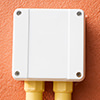 Electrical outlets and wall switches located on exterior walls can be responsible for up to 5% of energy loss in your home. Installing foam outlet gaskets are an easy and inexpensive way to reduce incoming drafts and outgoing temperature-controlled air. Your local hardware store will offer plates and switch covers with the foam attached or you can grab a box of gaskets and install them behind your current covers. Some plates are even spring-loaded to cover plug holes when not in use, which blocks even more air loss, and provides added protection for children.
Electrical outlets and wall switches located on exterior walls can be responsible for up to 5% of energy loss in your home. Installing foam outlet gaskets are an easy and inexpensive way to reduce incoming drafts and outgoing temperature-controlled air. Your local hardware store will offer plates and switch covers with the foam attached or you can grab a box of gaskets and install them behind your current covers. Some plates are even spring-loaded to cover plug holes when not in use, which blocks even more air loss, and provides added protection for children.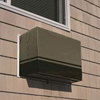 If your air conditioner is mounted permanently in a window or built into the wall, then winter winds can sift through your unit into the home and cause drafts, heat loss, and a higher electric bill. A quilted or insulated air conditioner cover will shield your unit from taking in cold air and can protect it from leaves, dust, and snow, which helps it function better when it’s time to use it in summer. You can choose a cover to place over your conditioner from the inside or the outside. You’ll find cover options in different sizes and materials (indoor ones are typically machine-washable). Some covers attach with Velcro, while others use elastic to wrap the unit like a fitted sheet. Besides a cover, add some weatherstripping to seal between the unit and window frame, and you’ve taken a big step in keeping yourself warmer in winter.
If your air conditioner is mounted permanently in a window or built into the wall, then winter winds can sift through your unit into the home and cause drafts, heat loss, and a higher electric bill. A quilted or insulated air conditioner cover will shield your unit from taking in cold air and can protect it from leaves, dust, and snow, which helps it function better when it’s time to use it in summer. You can choose a cover to place over your conditioner from the inside or the outside. You’ll find cover options in different sizes and materials (indoor ones are typically machine-washable). Some covers attach with Velcro, while others use elastic to wrap the unit like a fitted sheet. Besides a cover, add some weatherstripping to seal between the unit and window frame, and you’ve taken a big step in keeping yourself warmer in winter. The Federal Emergency Management Agency (FEMA) has developed an impressive mobile app experience, which provides emergency preparedness tips for nearly any situation – from home fires to tsunamis. It also features a map of local disaster recovery shelters and a Disaster Reporter map. The Disaster Reporter map functions much the same as Lantern Live, where it relies on crowdsourcing to supply and share photos that illustrate critical information for first-responders and fellow citizens. You can download the free FEMA app for your
The Federal Emergency Management Agency (FEMA) has developed an impressive mobile app experience, which provides emergency preparedness tips for nearly any situation – from home fires to tsunamis. It also features a map of local disaster recovery shelters and a Disaster Reporter map. The Disaster Reporter map functions much the same as Lantern Live, where it relies on crowdsourcing to supply and share photos that illustrate critical information for first-responders and fellow citizens. You can download the free FEMA app for your  The Lantern Live app allows you to look up the nearest operational gas station, find fuel, and view power outage maps. Using the clout of crowdsourcing and open data, Lantern Live calls on the people of a disaster-stricken community to provide updates and pertinent details. You’ll find real-time pictures and comments depicting the severity of a flooded road, while also being able to view local power outages and read useful tips on how to safely handle an emergency. Lantern Live is free but currently available only for
The Lantern Live app allows you to look up the nearest operational gas station, find fuel, and view power outage maps. Using the clout of crowdsourcing and open data, Lantern Live calls on the people of a disaster-stricken community to provide updates and pertinent details. You’ll find real-time pictures and comments depicting the severity of a flooded road, while also being able to view local power outages and read useful tips on how to safely handle an emergency. Lantern Live is free but currently available only for  The Red Cross has a family of mobile apps, each focused on a different type of emergency situation. The Tornado App, for instance, provides step-by-step instructions of what to do even if the power is out and cell towers are down. You can also opt into push notifications to alert you when tornado warnings have expired, which is especially helpful when you have no power to watch local news. You can learn more and download any of the free Red Cross apps
The Red Cross has a family of mobile apps, each focused on a different type of emergency situation. The Tornado App, for instance, provides step-by-step instructions of what to do even if the power is out and cell towers are down. You can also opt into push notifications to alert you when tornado warnings have expired, which is especially helpful when you have no power to watch local news. You can learn more and download any of the free Red Cross apps  Many people living in colder climates already have a survival kit packed in their car. If you don’t, this app provides a list of everything you need on hand in case of an emergency. On top of that, Winter Survival Kit will track your location should you get stranded in the middle of nowhere and need help contacting emergency services. The app’s Gas Calculator comes in handy by estimating how long you can run your engine with the fuel you have left in the tank. To help protect you from carbon monoxide poisoning, you’ll get an alert every 30 minutes to turn off your car and check the exhaust pipe for snow buildup. Get it free on
Many people living in colder climates already have a survival kit packed in their car. If you don’t, this app provides a list of everything you need on hand in case of an emergency. On top of that, Winter Survival Kit will track your location should you get stranded in the middle of nowhere and need help contacting emergency services. The app’s Gas Calculator comes in handy by estimating how long you can run your engine with the fuel you have left in the tank. To help protect you from carbon monoxide poisoning, you’ll get an alert every 30 minutes to turn off your car and check the exhaust pipe for snow buildup. Get it free on  For those with second homes or week-long travel plans, Power Outage Alarm Pro is extremely useful. It notifies you via text message or audible alert if any electrical equipment suffers a power cut while you’re away from home. The most popular uses include monitoring a fridge/freezer, fish tank, sump pump and heating system. Power Outage offers simple peace of mind when you download it on your
For those with second homes or week-long travel plans, Power Outage Alarm Pro is extremely useful. It notifies you via text message or audible alert if any electrical equipment suffers a power cut while you’re away from home. The most popular uses include monitoring a fridge/freezer, fish tank, sump pump and heating system. Power Outage offers simple peace of mind when you download it on your  Depending on your usage,
Depending on your usage,  Save energy by putting your computer in low-power sleep mode, and you’ll get the added benefits of keeping the machine cooler and retaining longer battery life. The
Save energy by putting your computer in low-power sleep mode, and you’ll get the added benefits of keeping the machine cooler and retaining longer battery life. The  Setting up energy efficient lighting is one of the simplest ways to save money. Arrange your desk to make the most of natural light on sunny days. Switch to halogen incandescent bulbs, LED, or compact fluorescent light bulbs, which last longer and use one-quarter to one-third of the power of conventional bulbs. Instead of relying entirely on overhead lights, conserve bulb usage by setting up task lighting. Place a floor lamp in a corner, and it will magnify light throughout the room.
Setting up energy efficient lighting is one of the simplest ways to save money. Arrange your desk to make the most of natural light on sunny days. Switch to halogen incandescent bulbs, LED, or compact fluorescent light bulbs, which last longer and use one-quarter to one-third of the power of conventional bulbs. Instead of relying entirely on overhead lights, conserve bulb usage by setting up task lighting. Place a floor lamp in a corner, and it will magnify light throughout the room. When home alone during the day, avoid running heat or air conditioning at capacity for the entire house. Lower the thermostat a bit and supplement your office with a space heater in the winter or with fans in the summer. Just don’t forget to unplug them when they’re not in use.
When home alone during the day, avoid running heat or air conditioning at capacity for the entire house. Lower the thermostat a bit and supplement your office with a space heater in the winter or with fans in the summer. Just don’t forget to unplug them when they’re not in use.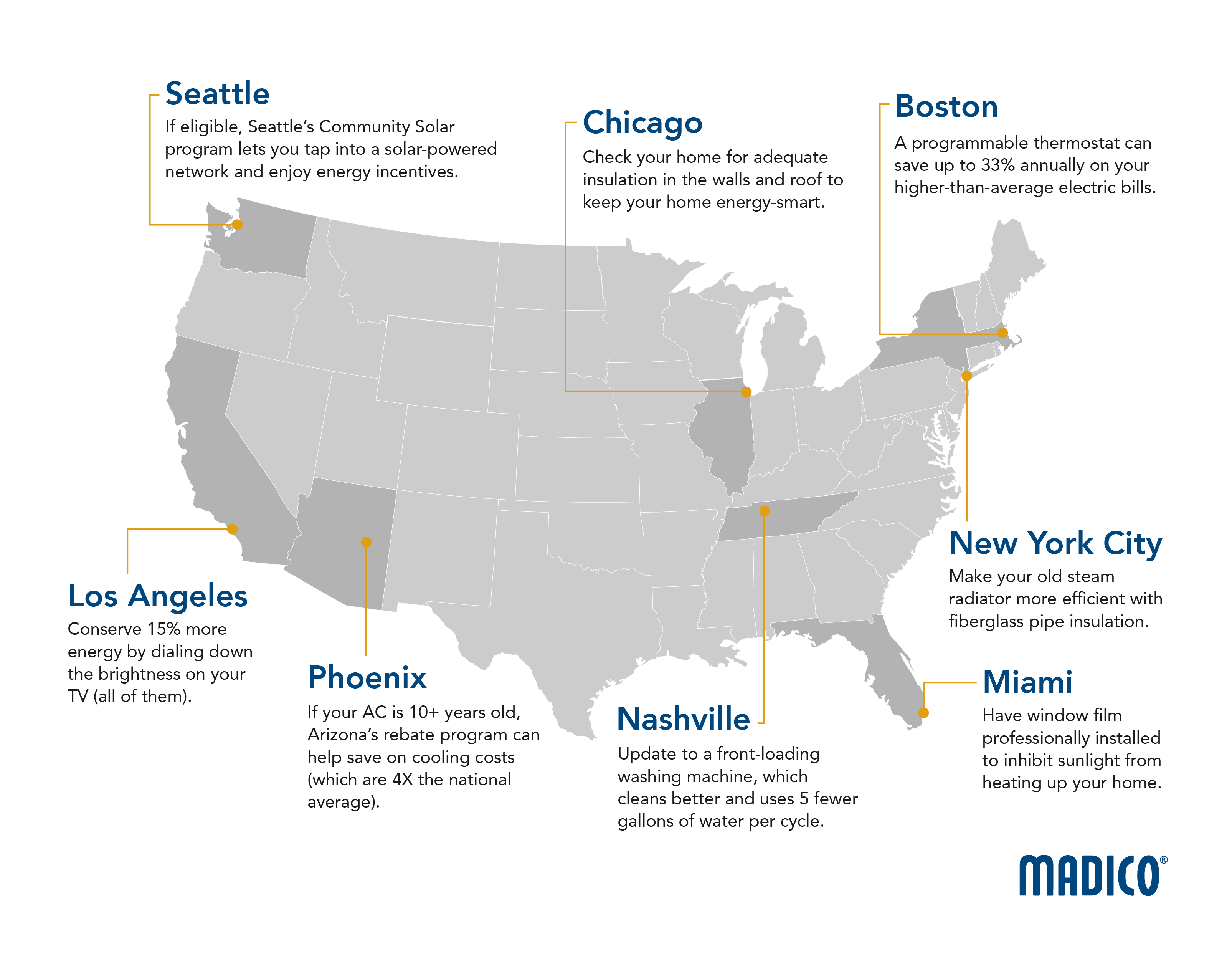
 Before leaving your home, set aside some time to walk through your home and make sure all unnecessary electronics and appliances are unplugged. Although you may not be using them while you’re on your vacation,
Before leaving your home, set aside some time to walk through your home and make sure all unnecessary electronics and appliances are unplugged. Although you may not be using them while you’re on your vacation,  Unless there are pets in the house while you’re away on your summer vacation, you can really take advantage of increasing your thermostat to cut energy consumption. Setting your thermostat between 85 to 87 degrees will show a drop in your next energy bill.
Unless there are pets in the house while you’re away on your summer vacation, you can really take advantage of increasing your thermostat to cut energy consumption. Setting your thermostat between 85 to 87 degrees will show a drop in your next energy bill.  On longer summer trips, it is a good idea to clean out your refrigerator and turn it off. Refrigerators are a major culprit of using large amounts of energy; they are the Hummers of automobiles. If the trip is shorter, you can raise the refrigerator and freezer temperature to the highest temperature it can go without spoiling the food inside. You can also power down your water heater if your summer vacation is longer than just a weekend getaway. Before shutting down or adjusting the settings on any major appliance, be sure to read the product manual to avoid issues.
On longer summer trips, it is a good idea to clean out your refrigerator and turn it off. Refrigerators are a major culprit of using large amounts of energy; they are the Hummers of automobiles. If the trip is shorter, you can raise the refrigerator and freezer temperature to the highest temperature it can go without spoiling the food inside. You can also power down your water heater if your summer vacation is longer than just a weekend getaway. Before shutting down or adjusting the settings on any major appliance, be sure to read the product manual to avoid issues. There are many things you can do to save energy in your vacant home during your summer vacation. Besides unplugging and turning off different appliances, you can also do simple, yet effective tasks, like closing your blinds and curtains. This helps maintain your home’s temperature by blocking the heat so that your AC doesn’t run more frequently than necessary. If you have window film on your home’s windows, that will provide an additional layer of protection from the sun’s rays and also help prevent fading of your window coverings. Your home’s windows provide the easiest access for cool air to escape and warm air to enter. Covering your windows also provides a level of privacy while you are away. So on your next summer vacation, be sure to follow some of these energy saving tips so you can worry less about your bills and more about relaxation.
There are many things you can do to save energy in your vacant home during your summer vacation. Besides unplugging and turning off different appliances, you can also do simple, yet effective tasks, like closing your blinds and curtains. This helps maintain your home’s temperature by blocking the heat so that your AC doesn’t run more frequently than necessary. If you have window film on your home’s windows, that will provide an additional layer of protection from the sun’s rays and also help prevent fading of your window coverings. Your home’s windows provide the easiest access for cool air to escape and warm air to enter. Covering your windows also provides a level of privacy while you are away. So on your next summer vacation, be sure to follow some of these energy saving tips so you can worry less about your bills and more about relaxation. 1. Serve Something Light: It’s almost too easy, but replacing incandescent bulbs with compact fluorescent light bulbs (CFLs) can save energy with little effort.
1. Serve Something Light: It’s almost too easy, but replacing incandescent bulbs with compact fluorescent light bulbs (CFLs) can save energy with little effort. 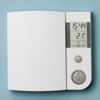 2. Set the Timer: Instead of manually adjusting your heating and cooling system each day, use a programmable thermostat that you can set and forget. A smart thermostat can automatically adjust the temperature based on your restaurant’s operating hours. With heating and cooling accounting for the majority of your utility bill, there’s a lot of savings to be had from efficiently controlling your restaurant’s climate.
2. Set the Timer: Instead of manually adjusting your heating and cooling system each day, use a programmable thermostat that you can set and forget. A smart thermostat can automatically adjust the temperature based on your restaurant’s operating hours. With heating and cooling accounting for the majority of your utility bill, there’s a lot of savings to be had from efficiently controlling your restaurant’s climate. 3. Place an Order for Shade: Speaking of climate control, what are you doing about that midday glare? Professionally-installed window film can block up to 99% of the sun’s rays, naturally keeping your restaurant cooler and customers more comfortable without turning up the A/C. And no matter what time of day, customers won’t need to squint, making it easier for them to enjoy their dining experience.
3. Place an Order for Shade: Speaking of climate control, what are you doing about that midday glare? Professionally-installed window film can block up to 99% of the sun’s rays, naturally keeping your restaurant cooler and customers more comfortable without turning up the A/C. And no matter what time of day, customers won’t need to squint, making it easier for them to enjoy their dining experience.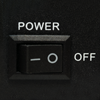 4. Cut the Power: Chances are you leave appliances on even when they aren’t being used. Power down ovens, toasters, and even cash registers when you don’t need them. If you have refrigerators or freezers that consistently remain half-full, condense all the food into fewer units and shut off these under-utilized energy-eaters.
4. Cut the Power: Chances are you leave appliances on even when they aren’t being used. Power down ovens, toasters, and even cash registers when you don’t need them. If you have refrigerators or freezers that consistently remain half-full, condense all the food into fewer units and shut off these under-utilized energy-eaters.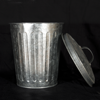 5. Take Out the Trash: Whether it’s an extra refrigerator you’ve been holding on to, a mediocre exhaust hood or a 10-year-old dishwasher, you likely have at least one large, energy-draining item that needs to be thrown out. If it’s a necessary appliance or ventilation system, be sure to replace the old unit with an ENERGY STAR certified version. A good example would be replacing an outdated dishwasher with an insulated or infrared gas model for optimum energy savings.
5. Take Out the Trash: Whether it’s an extra refrigerator you’ve been holding on to, a mediocre exhaust hood or a 10-year-old dishwasher, you likely have at least one large, energy-draining item that needs to be thrown out. If it’s a necessary appliance or ventilation system, be sure to replace the old unit with an ENERGY STAR certified version. A good example would be replacing an outdated dishwasher with an insulated or infrared gas model for optimum energy savings.